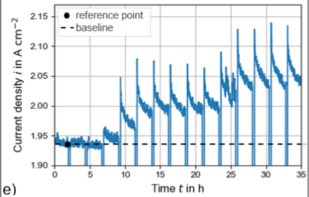
Over the next eighty years global warming is set to melt enough ice from the Greenland Ice Sheet to reverse 4000 years of cumulative ice growth – with rates of ice-loss more than quadruple even the fastest melt rates during the past 12,000 years. These stark conclusions come from new simulations which, for the first time, put current and projected future rates of ice-loss into context; comparing them directly with historical rates of ice-loss. These latest results are consistent with previous research that shows that if we continue our current high trajectory of greenhouse gas emissions we can expect Greenland to become ice-free in as little as 1000 years.
A couple of weeks ago a massive chunk of ice – equivalent in size to the Caribbean island of Montserrat – broke away from north-east Greenland. It serves as yet another indicator of the rapid pace of change in this region, with rising temperatures currently driving ice-loss at a rate of around 6100 billion tonnes per century. But how unprecedented is this? How quickly did the Greenland Ice Sheet melt during warm periods in the past?
The Greenland Ice Sheet currently stretches across 1,710,000 square kilometres and geologists have used ice-core data to understand how it has waxed and waned in the past. Until now, however, no-one had compared how ice-sheet activity in the past matched up with what scientists expect to see in the future. Jason Briner, from the University at Buffalo in New York, and colleagues have made use of recent reconstructions of climate and ice-sheet thickness to simulate the evolution of a portion of ice-sheet in southwestern Greenland, running their simulations from 12,000 years ago, through to eighty years into the future.
“Shocking” pace of ice loss
The scientists found that the highest rates of ice melt during the Holocene (the last 12,000 years) occurred during a warm period between 10,000–7000 years ago when it was 3–5 °C warmer than today. This resulted in ice being shed at a rate of around 6000 billion tonnes per century, which is similar to the loss rate seen over the last 20 years.
But as their simulation ventured into the future they discovered that the rate of ice-loss is likely to dwarf anything seen in the past. Under a high-emissions “business as usual” scenario Briner and his colleagues show that ice loss could reach an eye-watering 35,900 billion tonnes per century by 2100, whilst under a low-emissions scenario it is likely to rise to around 8800 billion tonnes per century. “It was a shocking to me to see that even with low emissions the pace of ice loss is going to be faster than it was during the warmest period in the past,” says Briner, whose findings are published in Nature.
Under a low emissions scenario the global sea-level rise associated with the melt from this segment of ice sheet is around 2 cm by 2100, whilst under high emissions it adds around 10 cm. Scaling this up to include the rest of the Greenland Ice Sheet suggests that Greenland ice-melt will produce at least 4–20 cm of sea level rise by 2100.
“Centuries of sea level rise”
“The findings of this study are no surprise, but they highlight that we should do everything in our power to slow the rate of melt,” says Timothy Lenton, Director of the Global Systems Institute at the University of Exeter. “Buying time for ‘managed realignment’ of the worlds coastlines and several major cities is a huge deal. When we are talking about centuries of sea level rise, we are considering a timescale where the global human population could conceivably be declining (as affluence leads couples to have fewer children, below ‘replacement rate’). That could make a realignment easier if it is further in the future. Whereas with currently growing population and growing coastal megacities it could be a nightmare,” he adds.
Previous research has suggested that we have already passed the point of no return for the Greenland Ice Sheet, with no hope of preventing a complete meltdown, but Briner and his colleagues are not convinced that this tipping point has passed. “It is clear that we are now committed to a lot of ice loss through this century, but our simulation shows that if we follow a low-emissions pathway the rate of ice-loss may slow as we approach 2100. It is possible to leave future generations with a healthy Greenland Ice Sheet,” he says. Lenton concurs and thinks there is still time to act. “Even if tipping points have been passed, because the ice sheet dynamics are relatively slow, it is possible to ‘overshoot’ an ice sheet tipping point temporarily and still recover the situation. That of course requires bringing greenhouse gas levels down, which is going to require deliberate greenhouse gas removal on top of stopping greenhouse gas emissions.”



